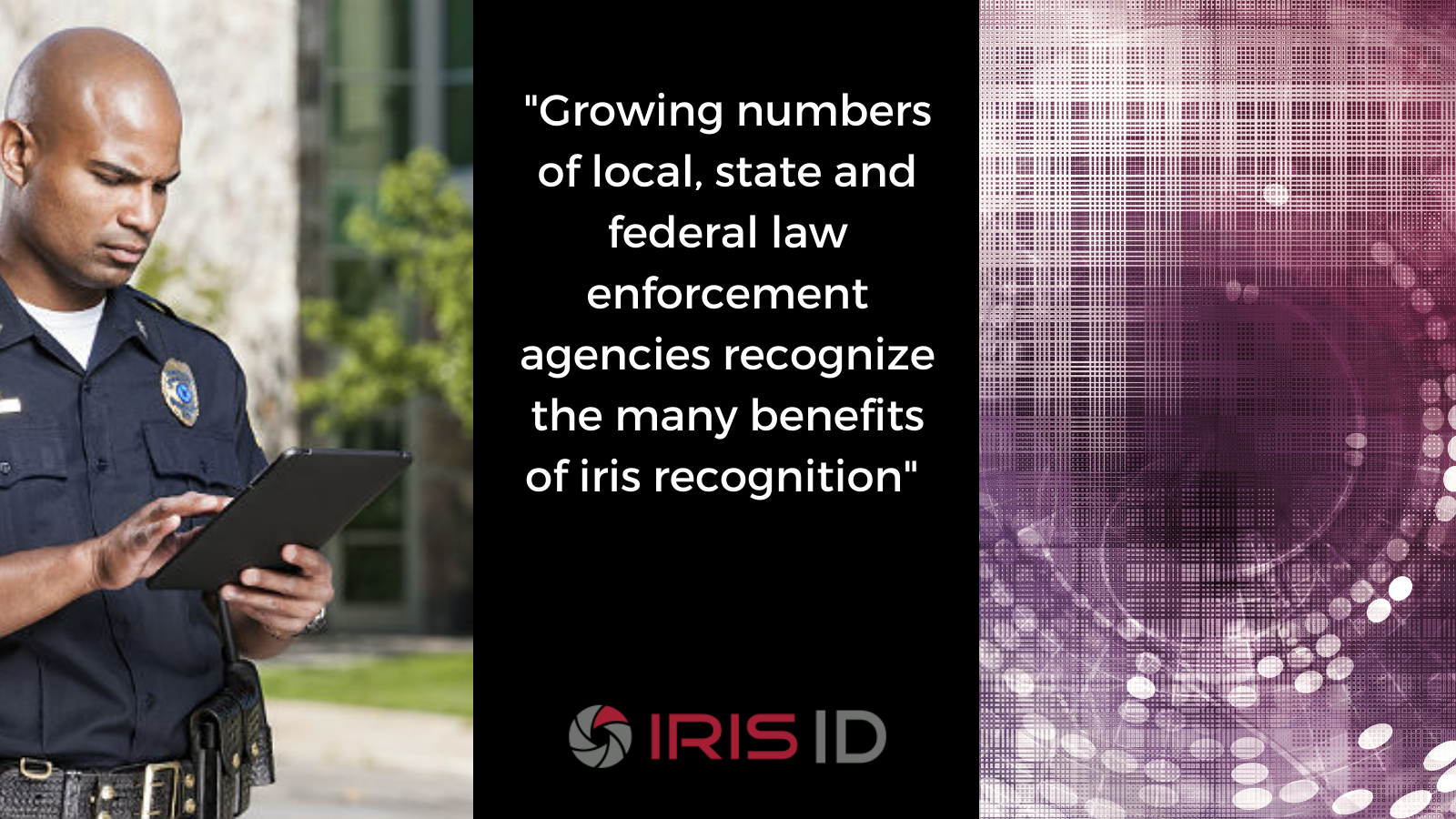by Tim Meyerhoff
Growing numbers of local, state and federal law enforcement agencies recognize the many benefits of iris recognition. Iris systems are widely seen as more accurate than other biometrics. The process of capturing criminals’ iris patterns is quick and touchless. Iris database templates are small, helping alleviate data storage concerns and reduce network traffic.
Growing Federal Database
Another growth driver is the expansion of federal databases, including records based on iris-based technology. Previously, one challenge the technology had was a lack of large national databases needed to identify arrested suspects accurately. That’s changing quickly. Agencies such as CBI CJIS, IDENT Immigration and DOD ABIS all have a significant iris data repository.
As they recognize the performance of iris-based identity authentication systems, the federal departments of Justice, Homeland Security and Defense are rapidly adding iris records to their national databases. Local and state law enforcement organizations are doing the same.
LACSD Project
For example, the Los Angeles County Sheriff’s Department uses Iris ID’s biometric recognition technology during its prisoner booking and release process. The department processes more than 300,000 bookings annually. The LACSD project is a partnership between Iris ID and DataWorks Plus, which provides central servers, software support and other services.
Iris ID works with other private service providers, including NEC Corp. of America, IDEMIA, ID Networks, Crossmatch, Aware and others, to integrate their data with the U.S .Government Certified Livescan Systems.
Beware of Siloed Databases
Agencies should avoid working with providers offering privately owned siloed databases that are not shared with the federal data repositories. Without access to national repositories, the value of these private databases to law enforcement agencies is greatly diminished.

